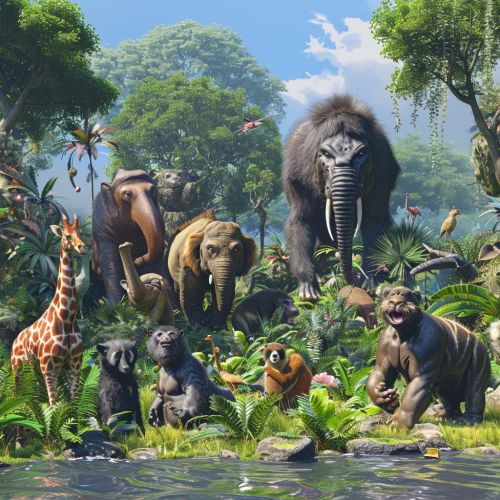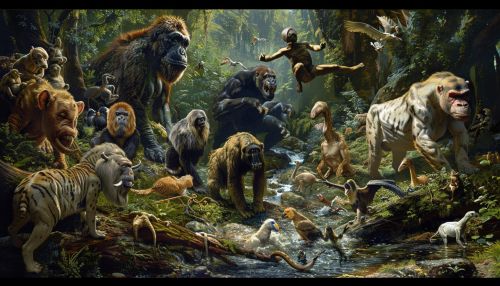Anthropoids
Taxonomy and Evolution
Anthropoids, also known as simians or higher primates, are a group of primates that includes monkeys, apes, and humans. They are distinguished from other primates, such as prosimians, by characteristics such as their relatively large brains and their more complex behavior and social structures.


The term "anthropoid" comes from the Greek words "anthropos" meaning "human" and "eidos" meaning "form" or "shape", reflecting the human-like appearance of these primates. Anthropoids are part of the suborder Haplorhini, which also includes tarsiers.
Anthropoids are believed to have evolved from prosimian ancestors during the Eocene epoch, around 55 to 34 million years ago. The earliest known anthropoid fossils, belonging to the genus Eosimias, date back to this period. Over time, anthropoids diversified into a wide range of forms and species, adapting to various environments around the world.
Anatomy and Physiology
Anthropoids exhibit a range of physical characteristics that distinguish them from other primates. They typically have larger body sizes and brain sizes relative to body size, compared to prosimians. Their eyes are forward-facing, allowing for stereoscopic vision, and they have a reduced reliance on the sense of smell, with a corresponding reduction in the size of the olfactory region of the brain.
The dental formula of anthropoids is also distinctive, typically consisting of two incisors, one canine, two premolars, and three molars on each half of each jaw. This differs from the dental formula of prosimians, which often have more incisors and premolars.
Anthropoids also have a more complex social structure than prosimians, with many species living in large, organized groups. They exhibit a range of behaviors related to social interaction, communication, and problem-solving, reflecting their relatively high level of cognitive ability.
Classification
Anthropoids are divided into two main groups: Platyrrhini, or New World monkeys, and Catarrhini, which includes Old World monkeys, apes, and humans.
New World monkeys are found in Central and South America, and are characterized by features such as a broad, flat nose, and a prehensile tail that can be used for grasping. They include species such as spider monkeys, howler monkeys, and capuchins.
Old World monkeys, apes, and humans are found in Africa, Asia, and Europe. They have a narrow, downward-pointing nose, and lack a prehensile tail. Old World monkeys include species such as baboons, macaques, and mandrills, while the apes include gibbons, orangutans, gorillas, bonobos, chimpanzees, and humans.
Conservation
Many anthropoid species are threatened by habitat loss, hunting, and disease. Conservation efforts are underway to protect these species and their habitats, with strategies including the establishment of protected areas, captive breeding programs, and legislation to regulate hunting and trade.
